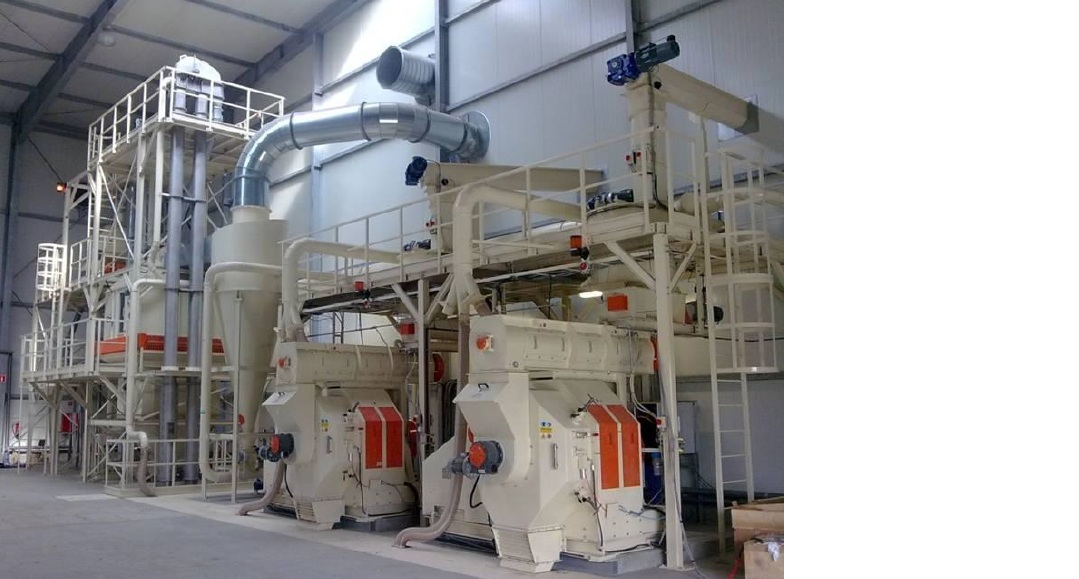Setting up a feed mill in the Philippines requires carefully considering the right equipment to ensure quality feed production. Each stage demands specific machinery, from mixing to packaging, to produce nutritious and safe feed for poultry and livestock. Here’s a comprehensive guide on choosing the right equipment for your feed mill plant and equipment in the Philippines.
Importance of quality equipment selection
Selecting the right equipment is essential for ensuring the production of uniform, high-quality feed that meets the nutritional needs of poultry and livestock. The equipment used in the feed manufacturing process plays a critical role in producing feeds that are efficiently manufactured, correctly delivered to the facilities, and consistently contain the available nutrients required by animals for body maintenance, growth, or reproduction.
-
Uniform feed quality and nutritional integrity
The right equipment, such as mixing, pelleting, and cooling machines, is crucial for achieving uniform feed quality and ensuring its nutritional integrity. These machines contribute to the precise blending of raw materials, the production of high-quality pellets, and the maintenance of the feed’s nutritional content, thereby meeting the specific dietary requirements of poultry and livestock.
-
Impact on animal health and performance
The utilization of quality equipment directly impacts animal health and performance. Well-processed and precisely formulated feed, achieved using appropriate equipment, ensures that animals receive the essential nutrients required for optimal growth, disease resistance, and overall well-being. This, in turn, leads to improved productivity and performance in poultry and livestock operations.
-
Compliance with quality standards
The right equipment selection is also crucial for ensuring compliance with quality standards. By utilizing equipment designed to meet industry standards and regulatory requirements, feed manufacturers can consistently produce feeds of high quality and safety, thereby enhancing their reputation and market competitiveness.
The importance of quality equipment selection in feed manufacturing cannot be overstated. The right equipment is fundamental to achieving uniform feed quality, maintaining nutritional integrity, promoting animal health and performance, and ensuring compliance with industry standards. Therefore, feed manufacturers must carefully consider the equipment selection to meet the specific needs of their feed production processes and the nutritional requirements of the animals they serve.
Considerations for poultry feed production
Poultry feed production requires careful attention to ensure animal health and productivity. Key considerations include:
Nutritional value and digestibility: Feed must be rich in essential nutrients like proteins, carbohydrates, vitamins, and minerals for optimal bird growth. Easily digestible feed enhances nutrient absorption, crucial for efficient commercial farming growth.
Avoidance of harmful additives: To safeguard poultry health and product quality, harmful additives such as antibiotics and growth hormones should be avoided. Natural alternatives like probiotics and herbal supplements promote bird health and immune function.
These considerations are vital for promoting flock well-being and ensuring safe, high-quality poultry production.
Key equipment for a feed mill
Several key machines play critical roles in poultry feed production, ensuring the quality, safety, and efficiency of the feed manufacturing process.
1. Mixing machine
The mixing machine is fundamental as it facilitates uniformly blending raw materials, fats, additives, and medicines. This process is crucial for achieving consistent nutritional composition throughout the feed batch. To maintain feed integrity, the machine must be meticulously designed to prevent cross-contamination between different batches and thoroughly mix all components.
2. Pelleting machine
Following mixing, the pelleting machine transforms the blended ingredients into compact pellets, known as complete feed, which contain all necessary nutrients for poultry nutrition. This machine must be capable of producing high-quality pellets that preserve the nutritional integrity of the feed. This ensures that each pellet delivers the required nutrients uniformly, supporting optimal growth and health in poultry.
3. Cooling machine
Once pellets are formed, they pass through a cooling machine. This equipment is vital for reducing the temperature of the newly extruded feed to levels suitable for safe storage and transport. Effective cooling not only enhances the shelf life of the feed but also prevents heat-related nutrient degradation. Like other machines, the cooling machine should be designed to minimize contamination risks and maximize operational efficiency.
4. Cleaning machine
The cleaning machine upholds cleanliness throughout the production line and plays a crucial role in preventing cross-contamination. Its streamlined design ensures thorough cleaning by minimizing residue accumulation and facilitating easy access to sanitation procedures. This is essential for maintaining feed safety standards and ensuring that each batch meets quality specifications.
5. Conveying machine
The conveying machine facilitates the efficient movement of raw materials and finished products within the production facility. It must be designed with a large inlet to prevent blockages caused by raw materials, thereby maintaining uninterrupted feed production. The smooth operation of conveying machines supports overall production efficiency and timely feed delivery to subsequent processing stages.
6. Packaging machine
Finally, the packaging machine completes the production cycle by efficiently packaging the finished feed into bags. This machine must feature precise weighing mechanisms and stable operations to ensure accurate portioning and consistent quality in packaging. Reliable packaging preserves feed freshness and facilitates convenient handling and distribution to customers.
Together, these machines form a comprehensive system that ensures the production of safe, high-quality poultry feed. Poultry feed manufacturers can optimize production efficiency by adhering to strict design principles and operational standards while safeguarding feed quality and integrity throughout manufacturing.
Technical specifications and features to look for
When selecting equipment for a feed mill, it’s essential to consider the technical specifications and features that align with the specific requirements of the production process. Here are some important factors to consider:
- Uniform mixing: Ensure the mixing machine provides a uniform blending of raw materials, fat, additives, and medicine to maintain consistent feed quality.
- Pellet quality: Select a pelleting machine that can produce high-quality pellets with the desired nutritional content for poultry and livestock.
- Cooling efficiency: Choose a cooling machine that effectively reduces the temperature of extruded feeds without compromising quality and nutritional integrity.
- Cleaning effectiveness: Opt for a streamlined design and pressure screening machine87hgy to prevent cross-contamination and ensure feed safety.
- Conveying capacity: Consider the conveying machine’s capacity and design to transport raw materials efficiently and finished goods within the mill.
- Packaging precision: Select a packaging machine with accurate weighing and anti-shock features to ensure precise and stable packaging of the finished product.
Market insights and trends
The poultry feed mill equipment market is experiencing significant growth, driven by increasing demand for high-quality feed products and advancements in feed production technology. The market offers a wide range of specialized equipment designed to cater to the unique nutritional requirements of poultry species, including chickens, ducks, turkeys, and other niche markets.
Conclusion
Choosing the right equipment for a feed mill in the Philippines is essential for ensuring the production of high-quality, nutritious feed for poultry and livestock. From mixing and pelleting to cooling, cleaning, conveying, and packaging, each stage of the feed production process requires specialized machinery to maintain feed quality, safety, and nutritional integrity. Feed mill operators can make informed decisions to select the most suitable equipment for their specific production requirements by considering the technical specifications, market insights, and trends.
For further assistance and detailed consultation on the design and selection of equipment for your feed mill in the Philippines, it is advisable to reach out to reputable equipment manufacturers for personalized guidance and recommendations.

